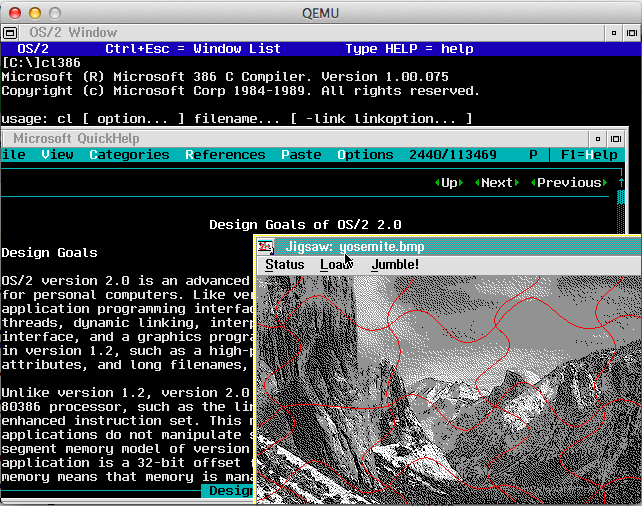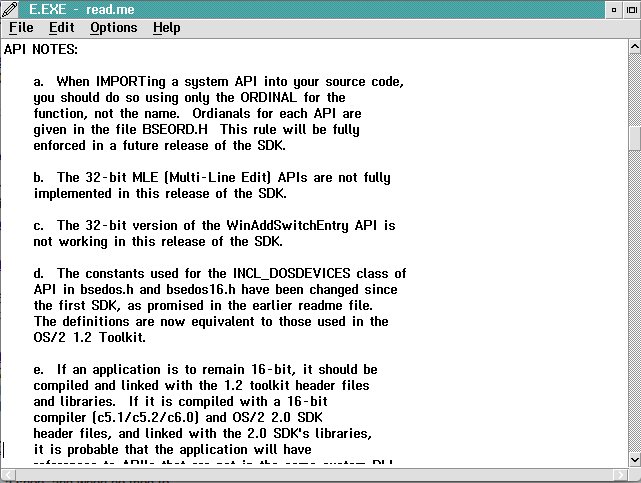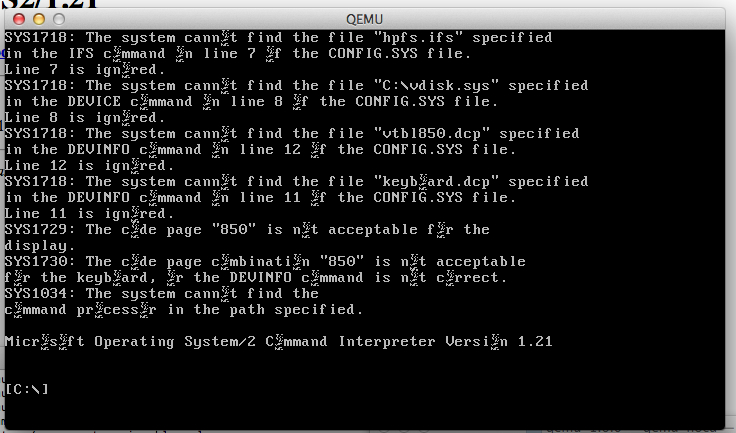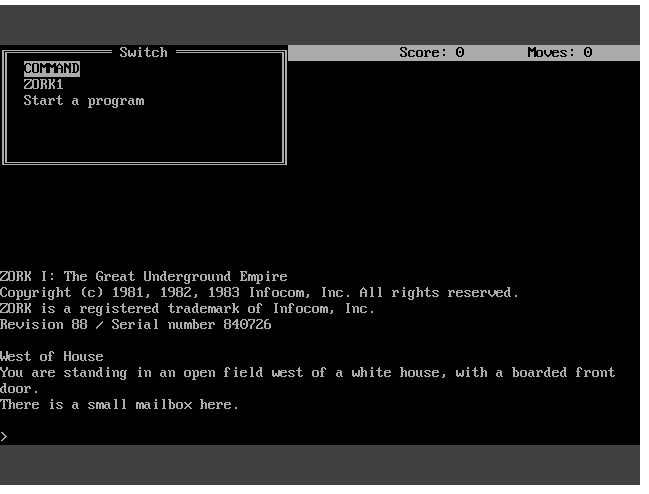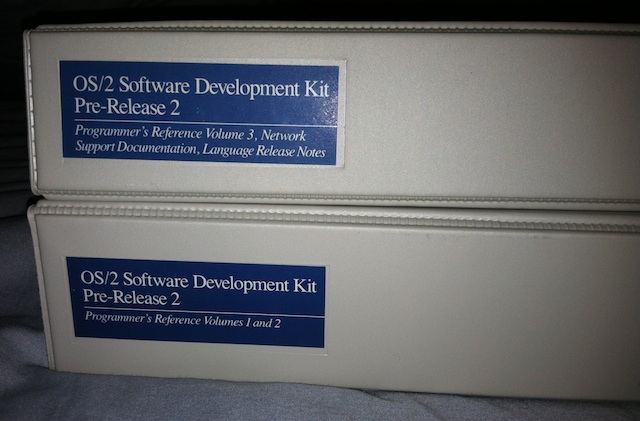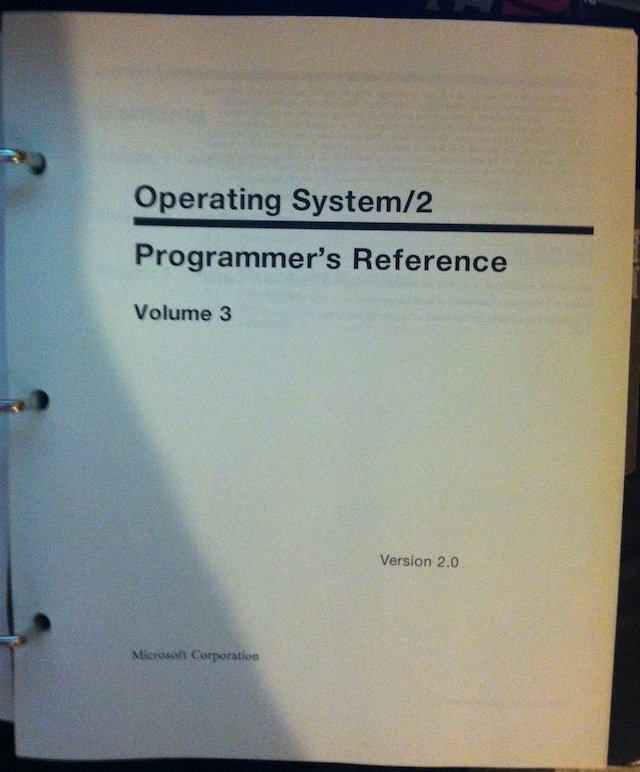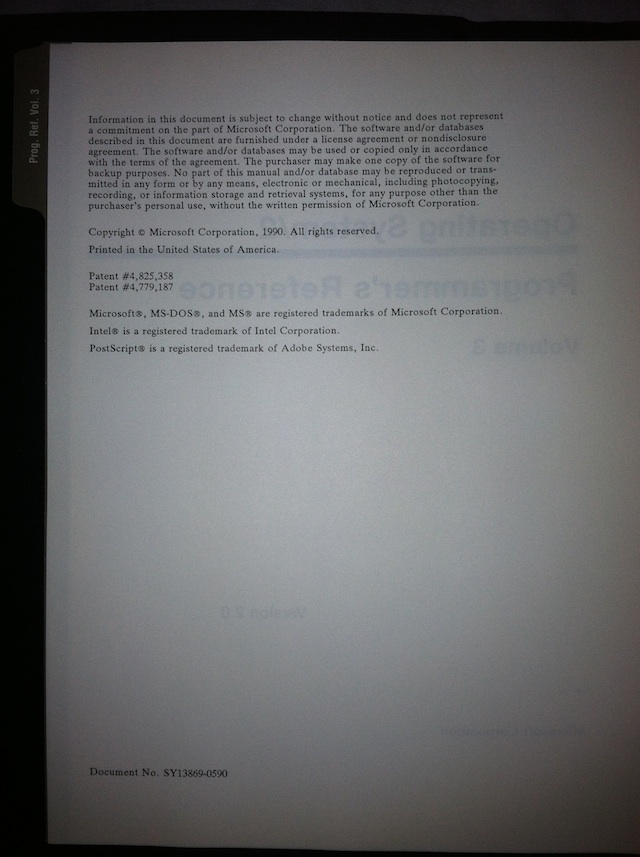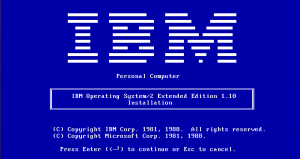 I recently acquired a copy of IBM OS/2 1.1 Extended Edition, and I thought I’d at least cover what makes this version different from the ‘Standard Edition’ and the Microsoft version of OS/2 1.1
I recently acquired a copy of IBM OS/2 1.1 Extended Edition, and I thought I’d at least cover what makes this version different from the ‘Standard Edition’ and the Microsoft version of OS/2 1.1
First off the IBM versions of OS/2 1.1 use the 286 triple fault method of switching from protected mode to real mode exclusively while the Microsoft kernel includes 386 detection & mode switch instructions. Â The the VirtualBox timing patches won’t work with the IBM kernel & drivers while the Microsoft kernel & drivers boot up and work fine on the IBM diskettes.

IBM Kernel strings

Microsoft kernel strings
And as you can see another weird thing is that Microsoft keeps all the string resources in os2ldr, while IBM has them in os2krnl..
So with the Microsoft kernel & drivers, on the IBM diskettes, installation went pretty straight forward. And once the OS is installed, then you have to open up a command prompt and install the various Extended Edition components:
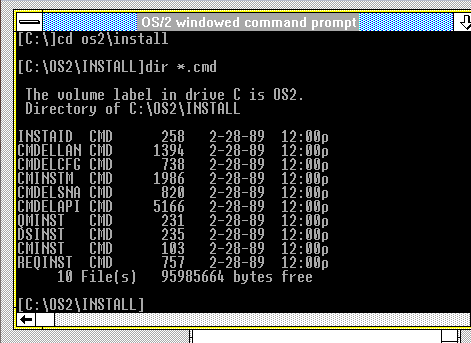
Which can be seen here as CMINST for Communications Manager, DSINST for the Database Server, QMINST for the Query Manger, and finally REQINST for the Network (NetBEUI) Requester Service. Â The file server capabilities were sold as an addon, known as Lan Manager.
IBM OS/2 1.1 does include a tutor program on how to use the OS, and some general help for Presentation Manger. Â I believe it wasn’t until 1.2 did Microsoft include one.
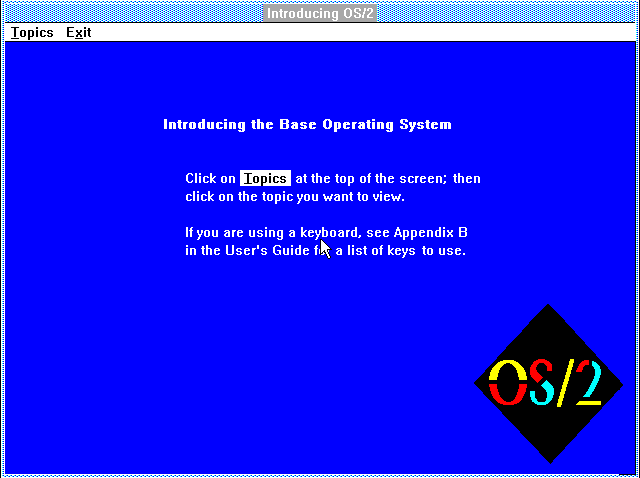
IBM OS/2 Tutor
As you can see it is kind of sparse but it does show the old school OS/2 logo. Â In addition each of the EE components includes a tutorial, although they are all text mode..
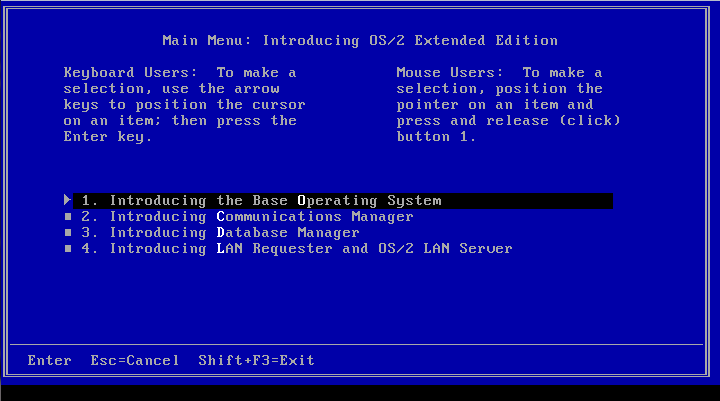
OS/2 EE Overview
And as an example here is what the Communications Manager looks like
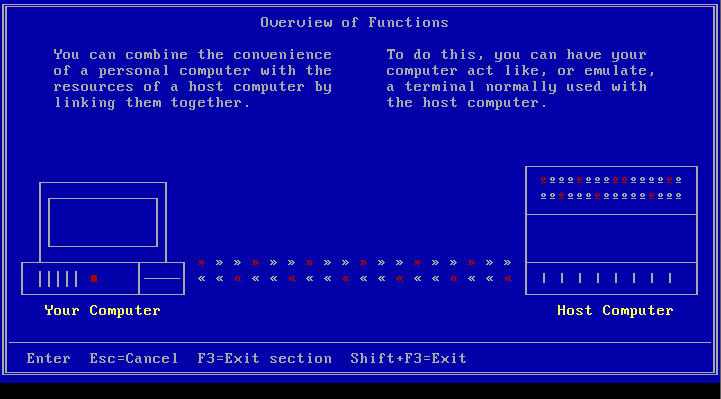
Communications Manager Tutorial
The sad thing is that the EE components are all full screen text mode.  There is no Presentation Manager integration at all here.  And I think this underlines a critical fault in OS/2 where there is separate text modes, both full screen & windowed that are incompatible with each other. Much like the first Lotus 1-2-3 for OS/2 ran in a full screen text window, you are blocked from seeing anything else at the same time, defeating the whole point of being able to multitask.
Communications Manager was the one thing that I did use, although it was honestly very disappointing  Its big thing at the time was communicating to Midrange (AS/400) and Mainframe (370/390) machines via SNA or X.25 . Also included is a basic ASCII dumb terminal emulation program that can do VT100 with Xmodem.  The real limiting factor is that it is limited to 9600 baud.  And this also brings out another long term deficiency in OS/2, the serial support was always underwhelming, and the majority of people eventually had to use the SIO drivers to get any decent performance.
The Database Manager is a simple enough SQL server, client. Â It is capable of doing simple reports, and even ‘panels’ much like Oracle forms of late. Â It seems robust enough on small sample tables, although I couldn’t imagine it handling anything of any major size by modern standards. Â I would imagine it would be for DB2 type users trying to steer them away from DBase, Paradox or Oracle. Â Although to be honest I’ve never seen it live in the wild but I’m sure someone did out there. Â Also I can’t imagine running a SQL server on a 6Mhz 286.

Sidekick for OS/2
One interesting thing included in OS/2 1.1 EE is Borland’s Sidekick for OS/2. Â While it didn’t make the cut in later releases it was a nice touch for 1.1 as otherwise it is pretty baren, as IBM & Microsoft seemed to feel that OS/2 should ship as barren as possible. Of all the applications though the PM notepad was the nicest.. Although I’m sure if it were 1988 I’d get more use out of the rest of sidekick.
For the heck of it, I’ve taken a VM of OS/2 1.1 and upgraded it to 2.0 and happily all the EE components work as well as they did on 1.1 . Â Considering how picky the Warp upgrade was, it is kind of surprising.

